Here are 9 Sure Shot Signs that Show Your Soil is Bad, and You Should Discard It! Follow these to keep your plants healthy and thriving!
Wondering what could be the best way to judge the quality of a growing medium? This guide will help you–keep reading till the end.
Here are the best recipes to make the perfect growing medium for your plants
What is Healthy Soil?
Healthy soil is productive, sustainable, and rich in nutrients and microorganisms. It is essential for growing healthy plants, food crops, and trees. It also helps filter runoff from rain and snow and provides a habitat for numerous organisms. Signs of healthy soil include:
- Dark, Rich Color: Healthy soil is usually dark in color and has a rich, crumbly texture.
- Good Structure: Adequate drainage and aeration are facilitated by the soil’s good structure.
- Good Water-Holding Capacity: Robust soil has the ability to retain and release water as needed without being too wet or too dry.
- High Organic Matter Content: Healthy soil should contain a significant amount of organic matter, which can come from compost, manure, and other sources.
- Good Biodiversity: Diverse organisms, like earthworms, fungi, bacteria, and other microorganisms, contribute to the soil’s health.
- Healthy Roots: Fertile soil supports a robust root system, providing nutrients and stability to plants.
- Few Weeds: Minimal weeds in the soil indicate a balanced nutrient profile and good soil health.
Want to Check the Soil pH at Home? Learn here
What is Unhealthy Soil?
Soil that has been impacted by poor management practices and is not able to support healthy plant growth is considered unhealthy soil. Such soil is typically marked by inadequate physical, chemical, and biological properties.
1. Physical Signs
It includes poor soil structure, compaction, and erosion. Poor soil structure can be identified by visible signs such as clumping or cracking.
Compaction occurs when the soil is too densely packed, and the pores between particles are reduced, limiting the flow of air and water. Erosion can occur when soil is exposed to wind or water, leading to a decrease in soil fertility.
2. Chemical Signs
Chemical signs of unhealthy soil include nutrient imbalances, salinity, acidity, and toxic levels of contaminants. Nutrient imbalances occur when the soil is lacking in certain essential nutrients or is overloaded with others.
Salinity is an indicator of high levels of sodium or chloride in the soil. Acidic soil is created when the pH of the soil is lower than 5.5. Toxic levels of contaminants can occur when the soil is contaminated with hazardous materials such as heavy metals.
3. Biological Signs
This includes a decrease in organic matter and organisms such as earthworms and a decrease in soil biodiversity. Organic matter is essential for healthy soil and provides a source of food for soil organisms.
A decrease in soil organic matter can reduce soil fertility and reduction in helpful organisms. Obviously, it impacts soil biodiversity and can lead to a decline in the number of species of plants and animals that can survive in the soil.
Learn about Changing Soil pH here
Sure Shot Signs That Show Your Soil is Bad, and You Should Discard It!
1. Cracked Soil
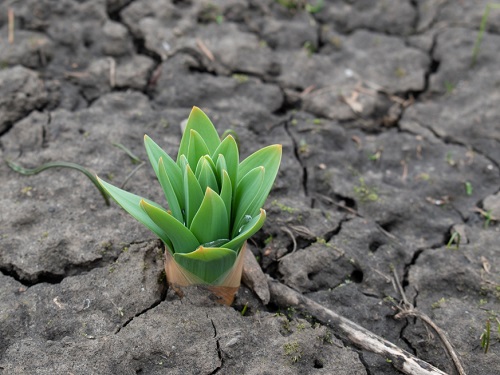
Soil erosion from heavy rains or wind can make the soil dry, dusty, and cracked, making it difficult for plants to survive. The soil can also turn dry or cracked due to less or no irrigation or low rainfall. You can discard this kind of soil or restore it with regular watering.
Bad or unhealthy soil lacks moisture and nutrients, which makes it dry and cracked. When you touch or pick this kind of soil, it can be difficult to break.
It’s a sure sign when you find it tough to dig a hole in the soil. This can make it complex for plants to take the oxygen and water required for growth. It can be due to contamination, foot traffic, or construction.
2. Hyperbolic Soil
Hyperbolic Soil is a type of soil that is characterized by its high degree of compressibility and low shear strength. It is typically found in areas of high moisture content and is prone to erosion and liquefaction.
It is also known as quick clay, collapsible soil, or sensitive clay.
3. Color of the Soil
Bad soil looks dirt, dry and brown. Poor soil becomes muddy when watered, whereas good soil absorbs moisture and does not have a muddy feel.
4. White Crust on Soil
If you notice a white crust on the soil, it’s due to too much salt accumulation around the root part that badly affects the plant growth; it impedes the roots from removing water from the surrounding soil.
This decreases the amount of water available to the plant irrespective of the quantity of water in the root area.
5. Fungus in the Soil
Fungus in the soil can infect the roots and cause root rot, wilt, and damping-off diseases. Basically, there are 8000 types of fungus, and if you are not sure what kind of fungus is affecting your garden soil, then discard it or take a sample to the local extension office for a free soil test.
6. Sandy or Clay Soil
This is a problem with your soil if it’s either too sandy or too full of clay, as it is not suitable for most plants. When you dig into your plot and find that the shovel can turn only lightweight silt or sand, it is probably telling you that the soil does not have many nutrients left to sustain any plant life.
Also, if the soil looks ochre or black or bright red in color, it may be a clay problem. To check, you can water your soil and then make a mud ball and squeeze it. If the lump stays together and feels a bit slimy, it indicates it is heavy clay soil. Clay in excess will prevent your plants’ roots from spreading or thwart any oxygen that they require.
7. Overused Soil
Overused soil is soil that has been used for agriculture or other activities to the point where its fertility has been reduced or even depleted. It is a major problem in many parts of the world, particularly in developing countries.
The signs of overused soil depend on the level of degradation. Poor soil structure, compaction, erosion, and poor soil fertility are all signs of soil overuse. It may have a thin layer of organic matter on the surface, which indicates the lack of organic matter in the soil. The soil may also be easily eroded, with large amounts of sediment washing away during rainstorms.
It may also have a low level of nutrients, leading to poor crop yields and diseases. The soil may also be highly acidic, leading to poor crop growth. In extreme cases, the soil may be completely devoid of life, with nothing growing on it.
8. Alkaline Soil
Alkaline soil is a type of soil that contains a high amount of alkaline substances, such as calcium carbonate, sodium carbonate, and potassium carbonate. It is also called basic soil due to its high pH, usually between 7.5 and 9.5. Signs of alkaline soil include:
- High pH: The pH of alkaline soil is usually 7.5 or higher. To test the pH of your soil, you can purchase a soil testing kit at a local garden center.
- High Concentrations of Calcium Carbonate, Sodium Carbonate, and Potassium Carbonate: These substances are what give alkaline soil its high pH.
- Low Levels of Nutrients: Alkaline soil tends to have low levels of essential nutrients, such as nitrogen, phosphorus, and potassium. This can make it difficult for plants to grow.
- Poor Drainage: Alkaline soil does not absorb water well, so it tends to be waterlogged and has poor drainage.
- White Deposits: Alkaline soil often has white deposits on its surface, which are caused by the high concentrations of alkaline substances.
- Chalky Texture: Alkaline soil tends to be powdery and chalky when touched.
9. Clumps in the Soil
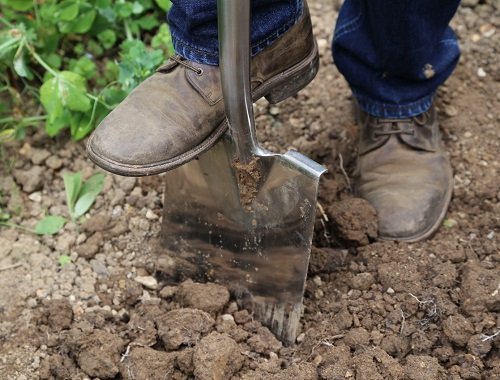
Clumps in soil are large, dense clumps of soil that are found in the soil. The clumps form due to the accumulation of organic matter, minerals, and air pockets. It can have a variety of causes, including compaction, chemical changes, and biological activity. Signs of clumps in the soil can include:
- An Uneven Surface: Clumps of soil are often visible on the surface of the soil, leading to an uneven surface. The clumps may be of various shapes and sizes.
- Poor Drainage: It can cause poor drainage. If the soil is too compact, water may be unable to drain properly, which can lead to standing water.
- Poor Aeration: This type of soil can make it difficult for oxygen to reach plant roots, leading to poor plant growth.
- Poor Nutrient Availability: Clumps can prevent nutrients from being evenly distributed throughout the soil, leading to nutrient deficiency in certain areas.
- Limited Root Growth: It can prevent roots from growing and exploring the soil, leading to limited root growth.
Clumps in the soil can be caused by a variety of factors, including compaction due to heavy machinery or machinery traffic, chemical changes due to fertilizers, and biological activity due to bacteria, fungi, and earthworms.
To address clumps in the soil, it is important to identify the cause and take appropriate steps to reduce the clumps. This may include aerating the soil, adding organic matter, and applying fertilizers.
Learn some Expert Tips to Rejuvenate Old Soil here
Signs that Commercial Potting Mix Has Gone Bad
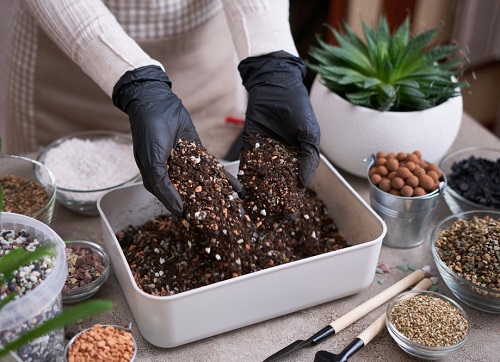
- Unpleasant Odor: Potting mix that has gone bad will usually smell sour or musty.
- Mold Growth: Mold growth indicates that the potting mix had been exposed to too much moisture or that it has gone bad.
- Discoloration: Potting mix that has gone bad will often be discolored, with a grayish or yellowish hue.
- Excessive Drainage: Potting mix that has gone bad won’t be able to hold water as well and will drain too quickly.
- Insect Infestation: Insects, such as fungus gnats or root aphids, can be an indication that the potting mix is no longer suitable for use.
Learn about the Most Common Garden Pests here
Conclusion
Here are some of the best ways to ensure your soil stays at the best of its health.
- Test Your Soil: Before you start amending your soil, it’s important to understand what’s wrong with it. Soil tests will help you determine nutrient levels, pH, and other characteristics, so you’ll know exactly what you need to do to improve it.
- Amend the Soil with Organic Matter: Adding organic matter to your soil is the easiest and most effective way to improve it. Organic matter increases the soil’s ability to retain moisture and nutrients, improves soil structure, and helps create a healthier environment for beneficial organisms. Manure, compost, and leaf mold are all good sources of organic matter.
- Add Nutrients: You can also add specific nutrients to your soil as needed. If a soil test reveals that your soil is lacking in a particular nutrient, you can add it back in the form of a fertilizer. Organic feeds like manure or compost tea can be used to add nutrients without the risk of overfertilizing.
- Improve Drainage: If your soil is overly wet or soggy, it’s important to improve drainage. Adding organic matter, such as compost, to your soil can help improve drainage and aeration. You can also create drainage channels to help move excess water away from the roots of your plants.
- Add Cover Crops: Cover crops are plants that are grown specifically to help improve soil health. They help add nutrients and organic matter to the soil while preventing erosion. Cover crops can also help break up compacted soil, improving the structure and drainage.
- Mulch: Mulching your soil can help keep it cool in the summer and warm in the winter while also preventing weeds and helping the soil retain moisture. Organic mulches like straw or grass clippings work well, but you can also use synthetic mulch like plastic or rubber.
- Introduce Soil Insects: Adding beneficial soil insects like earthworms and centipedes manually is a great idea, too, as they help in the breakdown of organic matter.
- Tilling: One more measure you can take to improve the soil condition is tilling. It helps in improving bad soil by loosening and aerating the soil, which allows for better water penetration and root growth. It also helps to mix in organic matter and nutrients, which can improve soil structure and fertility.


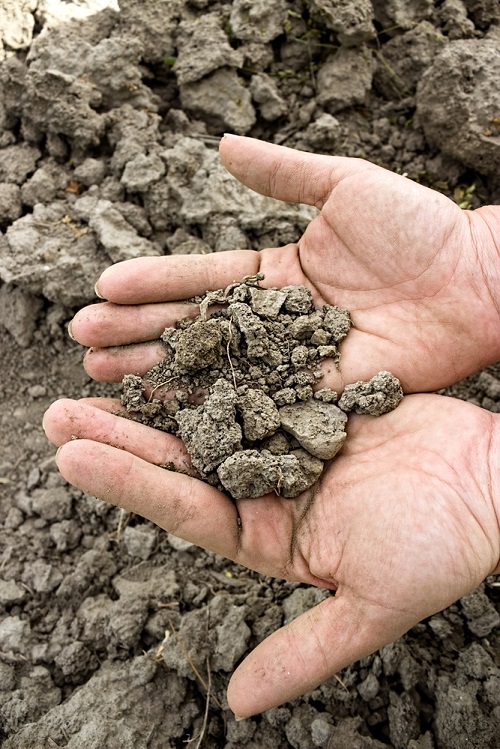

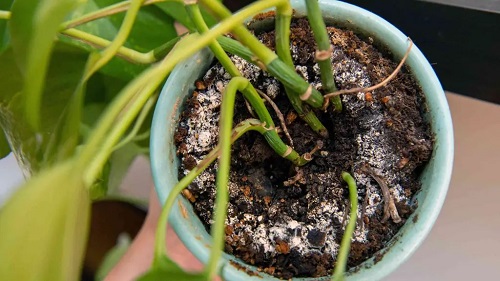
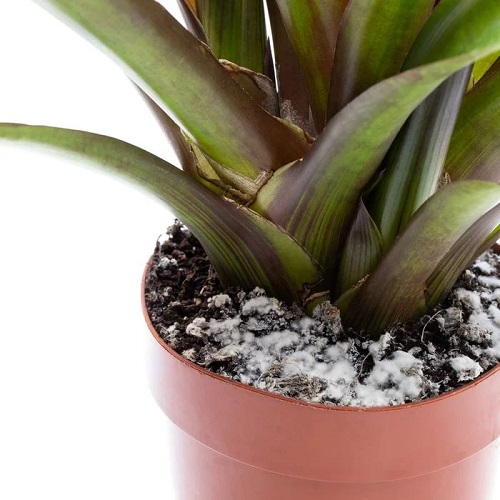
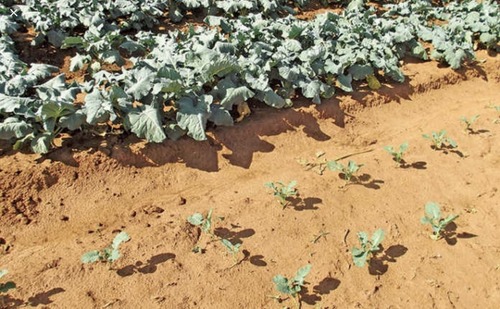
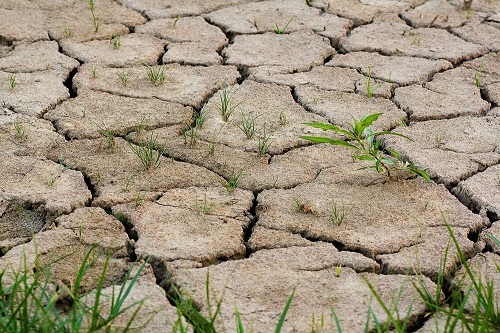

Put the soil on black tarp and let cook in the heat to kill the bad in the soil I do it every year